- HOME
- Create Your Way
- Can you build a custom inventory management app without using any code? Yes, and here’s how.
Can you build a custom inventory management app without using any code? Yes, and here’s how.
- Last Updated : November 18, 2025
- 11.6K Views
- 6 Min Read
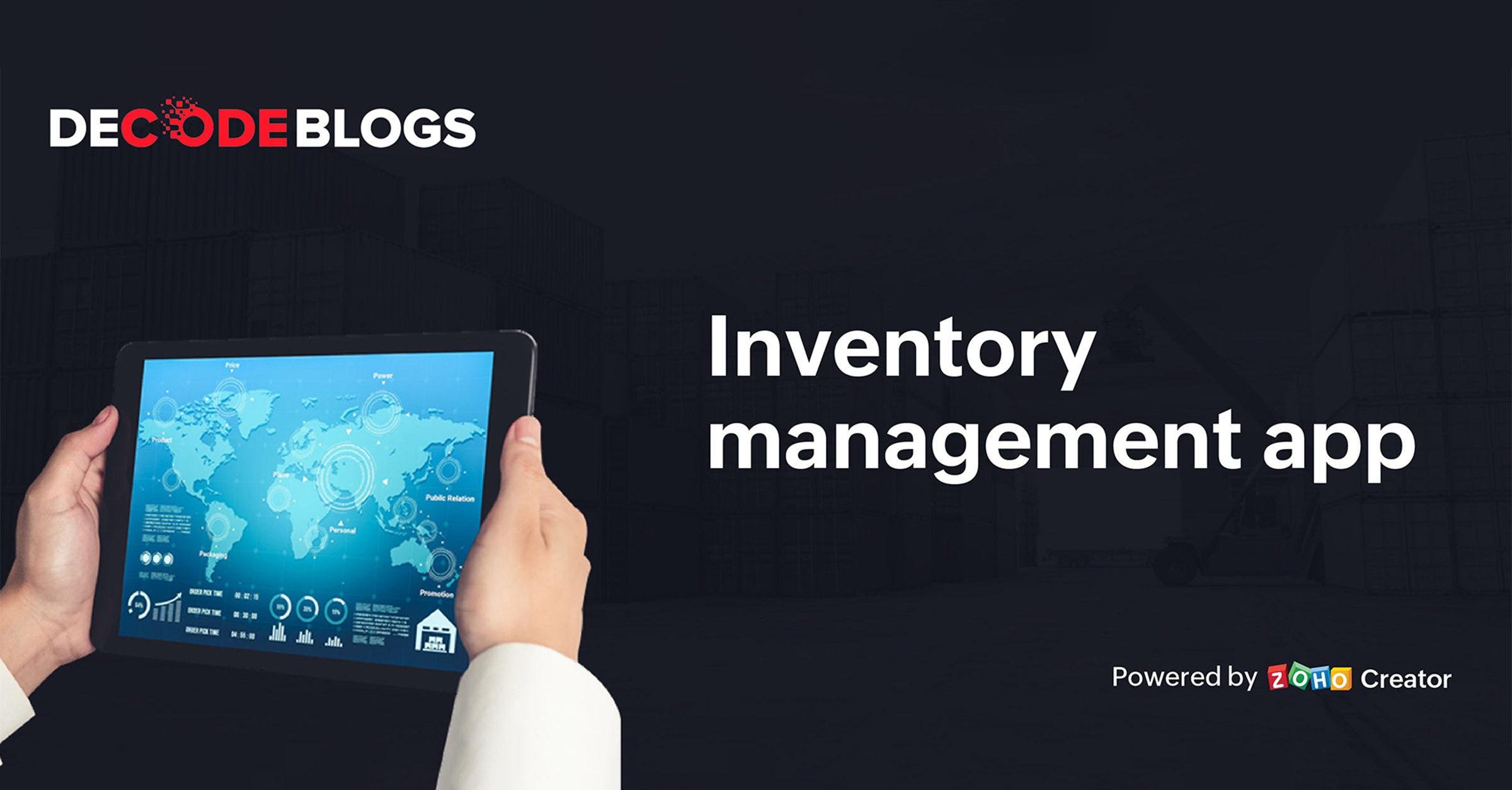
Retail businesses rely on balanced inventories. If you’re at the helm, managing existing stock, sending out purchase orders, and updating inventory, you know how tough it is to find a single app that can handle everything—and simplify your job for you.
Chances are you’re using three or four different pieces of software—each with a different login—so you can place orders through one, review stock in another, and trigger reminders from yet another app.
Sounds hectic. And yet none of those programs are designed to cater to your requirements. They’re generic apps that assume how you do business, and you often end up altering your processes to the software’s restrictions.
The alternative? Build your own inventory management app.
Why you should build your own inventory management system
Features you need
Most premade software comes with excessive functionality. That’s the industry standard for good software—its comprehensiveness. Often, however, that’s an unnecessary burden. If you’re a medium-sized business, you don’t need enterprise-grade features right away. When you build your own app, you’ll have only what you need.
Anytime expansion
With a custom app, you start off with only the modules you require, and you can easily add more as you grow. That way, your app remains usable and familiar, even as you extend it.
Small learning curve
Spent hours training on new software? Why spend precious time on endless webinars, one-on-one calls, and workshops learning software that doesn’t quite fit your business? With a custom app, the learning curve is decidedly smaller—or nonexistent.
Custom modules and reports
Ready-made software doesn’t always cater to the unique industry terms you use with your stakeholders. A custom app can reflect your brand, right down to your words of choice.
Single database management
The best thing about managing inventory with a custom app is that you’ll have everything in one place. From stock lists and supplier details, to manufacturer contacts and delivery partners, all you need will be in a central database, easy to access.
Sounds good, doesn’t it? But it’s also idealistic, in a way. After all, building software from scratch can be daunting.
Specialized budget and talent
When you build an app, say for the web, you pay for the developer. But it doesn’t stop there. You’ll also need an iOS version of your app—and an Android version. This means you’ll need to allocate individual budgets for each developer trained in a specific language.
Time to deploy
Traditional app development takes six to eight months, at the least. And that’s only for initial development. Once you get a prototype, you gather feedback, and refine it for a few more months (which can easily extend to years) before you’re ready to deploy the app for everyday use.
Server space and maintenance cost
Deployment is another major investment with traditional app development. Once you spend months and millions on building the app, you then spend more on buying, setting up, securing, and maintaining servers. These are bulky, expensive, and take up entire rooms.
App updates across platforms
Once you cross those other hurdles, your app will function successfully—until you need to update it. Even just to add an extra field to your order form, you’ll need to contact your developers for the web, iOS, and Android versions, pay them individually, and push the update live. That means more time and effort on your part.
Not too attractive, is it?
There’s another way though, low-code technology.
Low-code tech lets you build cloud-based apps without using complex programming languages. These apps are easy to build and have a much shorter turnaround time than traditionally developed apps.
Zoho Creator is an affordable, easy-to-use low-code app development tool. You can build your custom inventory app on Zoho Creator today.
Unsure? Here’s how to do it:
The 5-step guide to building a custom inventory app on Zoho Creator
The first thing you need is to identify what elements and workflows your app needs. For example, in this inventory app, we’ll need:
A database of the goods you sell, along with warehouse locations
Records of stock inflow and outflow
The ability to update records immediately as stock is purchased or sold
A product catalog that displays all the stock details for the app’s admin or business owner
Now let’s look at how we can incorporate all of these requirements into our app:
Step 1: Create a form to maintain various store locations and details
Zoho Creator is easy to use because it gives you a drag-and-drop interface to build most of your app. In the form builder, for example, you’ll have a list of fields on the left panel and a canvas in the middle. Just drag and drop the fields you want in your app, and voila—the first form is all set.
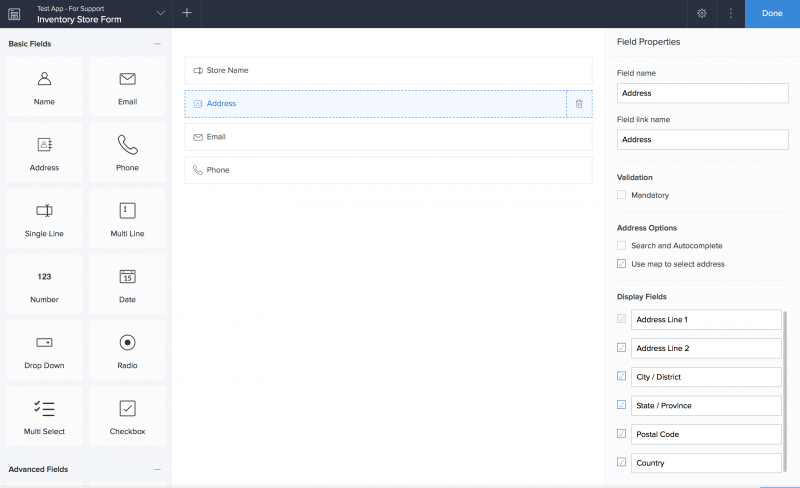 What’s more, if you already have this data in a spreadsheet, you can skip the drag-and-drop step entirely and upload your spreadsheet directly. Creator will automatically transform it into a form, saving you a bit of time.
What’s more, if you already have this data in a spreadsheet, you can skip the drag-and-drop step entirely and upload your spreadsheet directly. Creator will automatically transform it into a form, saving you a bit of time.
Step 2: Create a form to collect and maintain product details
Just like in the previous step, you can use the drag-and-drop interface to build a second form. This one will have fields like the name of the product, its ID or code, the store it’s sold in, and more.
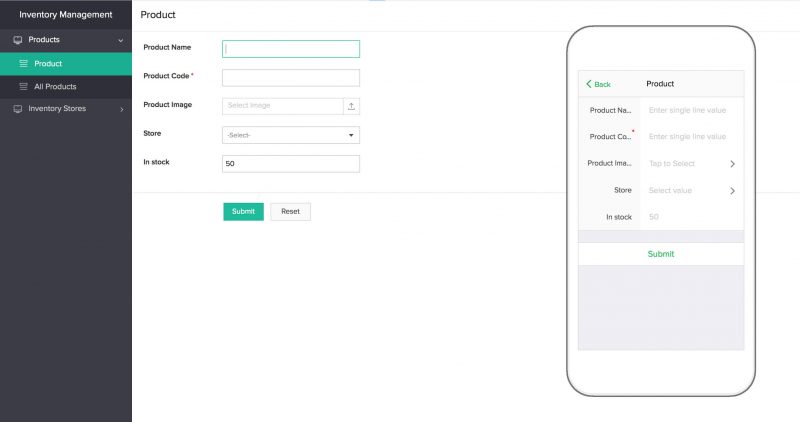 Note: Instead of creating a new single line field to capture the store details, you can make it a lookup field and connect it with your first form. That way, you’ll avoid duplicates and unnecessary errors, on top of keeping your data organized.
Note: Instead of creating a new single line field to capture the store details, you can make it a lookup field and connect it with your first form. That way, you’ll avoid duplicates and unnecessary errors, on top of keeping your data organized.
Step 3: Create a form to update stock every time a purchase is made
This step has two parts: first, you need to create a form, and second, you then create a workflow in that form, so that it updates your stock numbers every time you make a purchase.
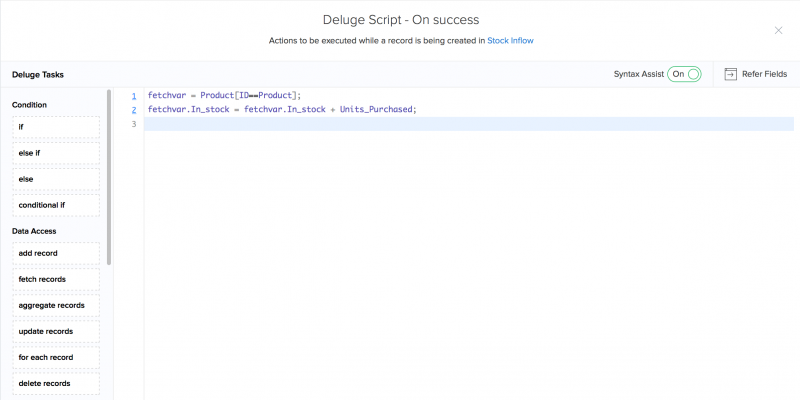 To create the workflow, we use Deluge, Zoho’s built-in scripting language. With this workflow, whenever you submit the stock inflow form, it checks the existing stock, and then adds the new stock to it and sets a new total. Zoho Creator’s script builder comes with prebuilt blocks of code that you can drag, drop, and edit according to the field names you use in your form. It’s so low-code that it practically writes the script for you.
To create the workflow, we use Deluge, Zoho’s built-in scripting language. With this workflow, whenever you submit the stock inflow form, it checks the existing stock, and then adds the new stock to it and sets a new total. Zoho Creator’s script builder comes with prebuilt blocks of code that you can drag, drop, and edit according to the field names you use in your form. It’s so low-code that it practically writes the script for you.
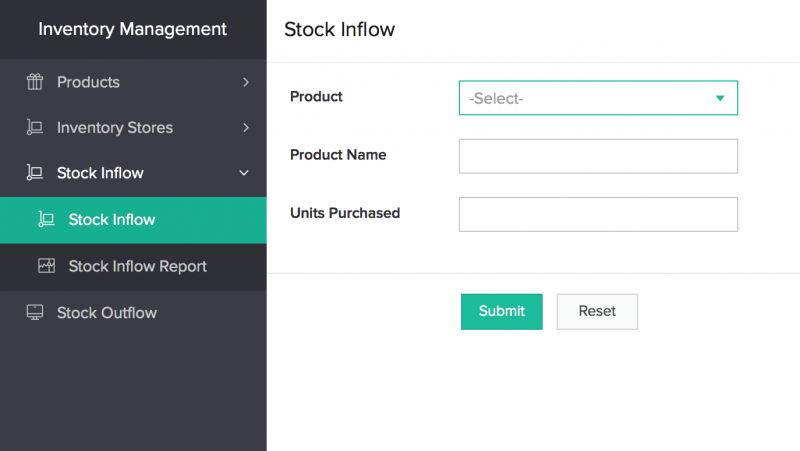 Step 4: Create a form to update stock every time a sale is made
Step 4: Create a form to update stock every time a sale is made
Similar to the previous step, this form and its corresponding workflow will deduct the amount sold from the existing stock.
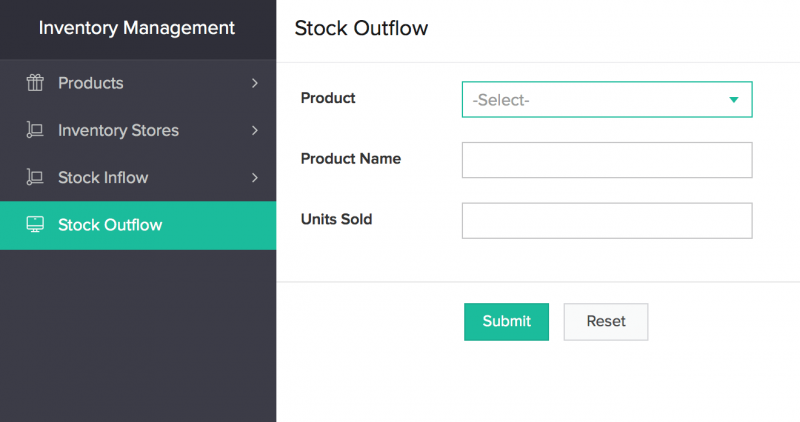 For every form you create, Zoho Creator automatically generates a report that’ll show all the data collected through the form.
For every form you create, Zoho Creator automatically generates a report that’ll show all the data collected through the form.
Step 5: Create a catalog of products available for sale
One of the coolest aspects of Zoho Creator is that it automatically generates a report for every form you build. So all of the forms you’ve created so far will have a default report that lists out the data entered in it.
You can build eight types of reports including maps, bar charts, and pivot tables. For this last step, however, we need a Kanban report.
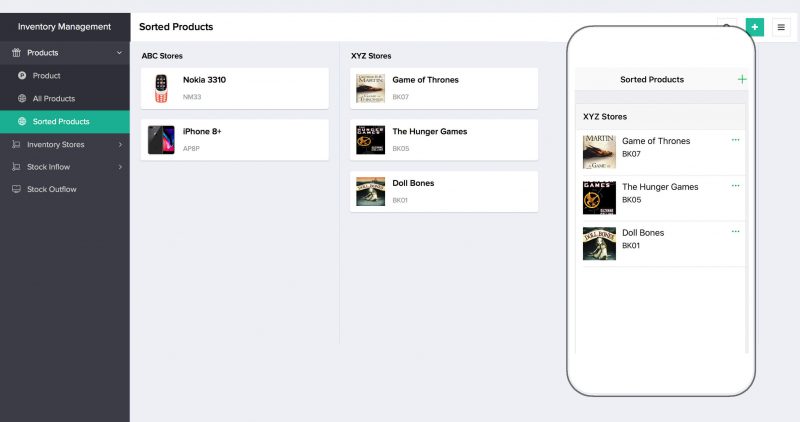 Aside from these reports, you can also use the page builder to create comprehensive dashboards. And the page builder comes with ready-to-use panels that you can drag, drop, and customize. You can also embed forms and reports in your dashboards, create buttons with custom actions, and a whole lot more.
Aside from these reports, you can also use the page builder to create comprehensive dashboards. And the page builder comes with ready-to-use panels that you can drag, drop, and customize. You can also embed forms and reports in your dashboards, create buttons with custom actions, and a whole lot more.
Believe me now? You absolutely can build your own inventory management app on Zoho Creator!
Bonus takeaway
Throughout this blog, we’ve discussed how to build your app for the web. With Zoho Creator, though, when you build your custom inventory management app for the web, a corresponding iOS and Android app is generated automatically—no additional developer or separate programming required.
You can preview and download it from your Creator account and then publish in the App Store or Play Store. And you can either publish the app as is, or customize it further to suit mobile screens, like hiding unnecessary reports, enabling offline forms, setting a geofence for submitting forms, and more.
If you go back and take another look at all the screenshots in this blog, you’ll notice the mobile version of the app displayed in many of them.
Ready to give Zoho Creator a chance?
Here’s a step-by-step video guide that walks you through building a simple inventory management app on Zoho Creator.
And we know building a complete app can be scary. It might take some time and patience. However, we believe it’s worth it, rather than spending years unhappy and disgruntled with expensive, off-the-shelf software that doesn’t work the way you do.
So go ahead and start decoding your business problems today!
 Mathi Ganesh
Mathi GaneshData-driven digital marketer experienced in handling multiple SAAS products across different platforms. Experienced in strategizing, campaign management-analytics & training.

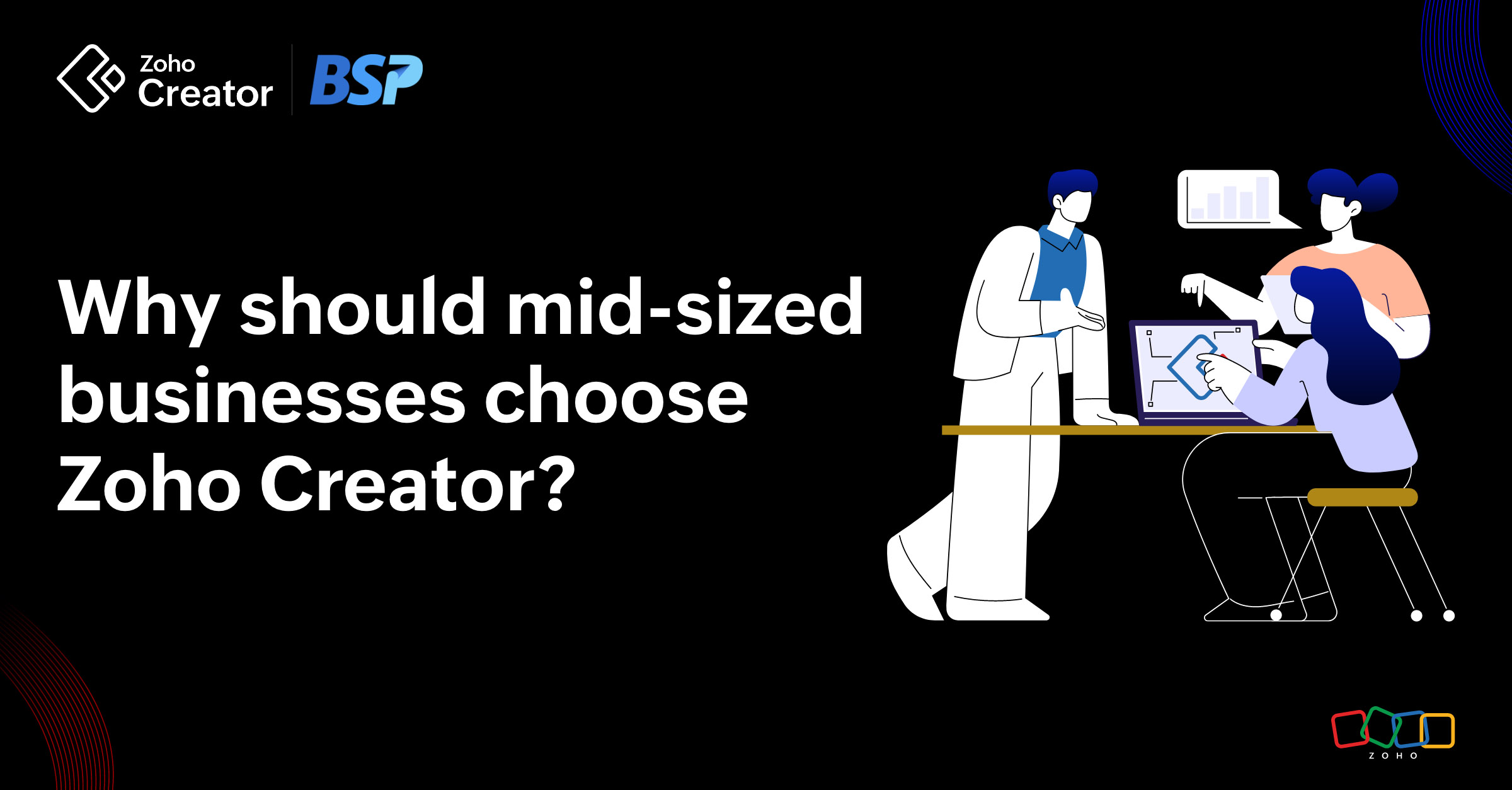
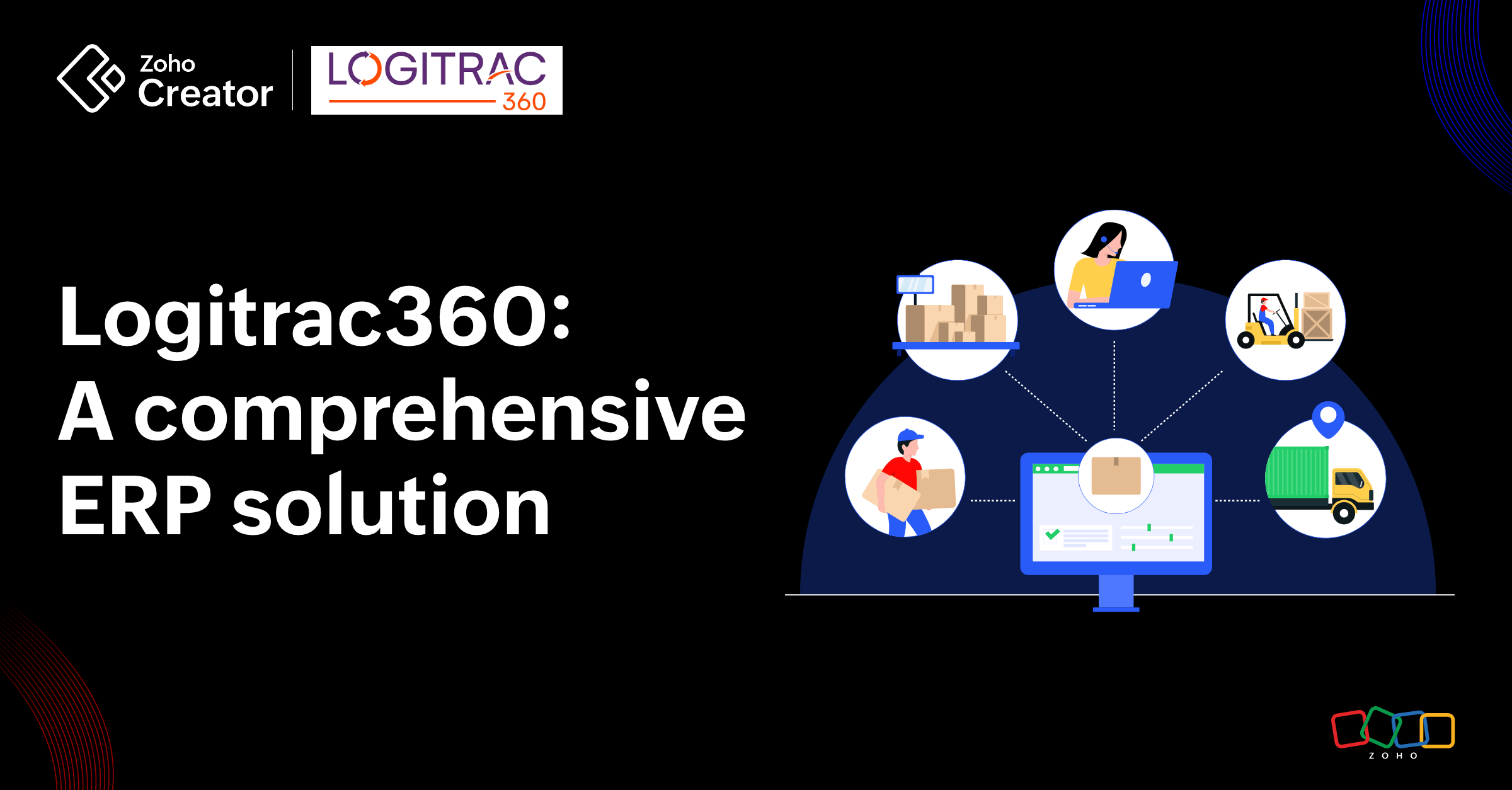
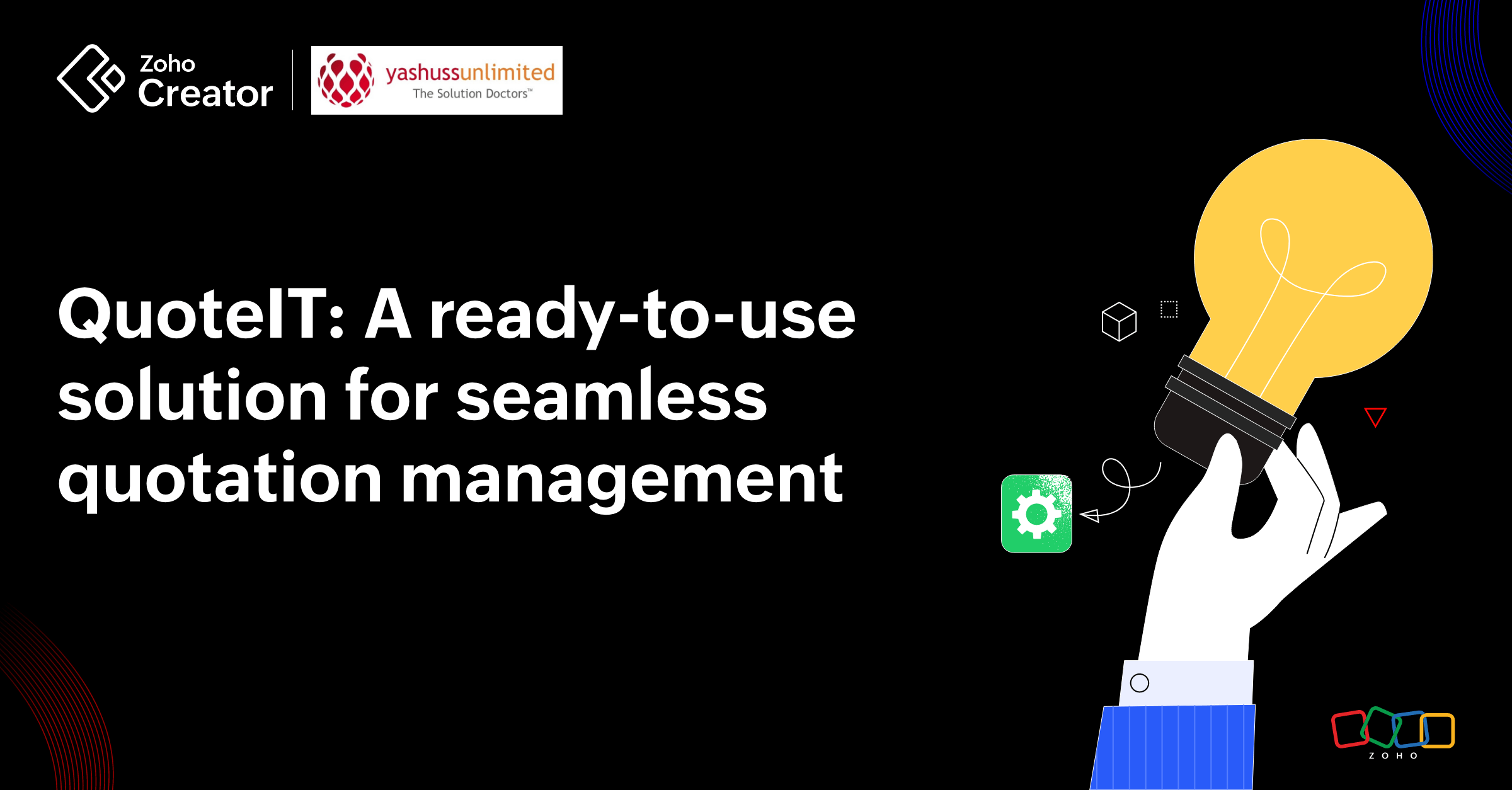
Comments(1)
i want to create my own app to get real time customised reports from zoho inventory to simplified stock management along with purchase price plz help us how can i achieve this